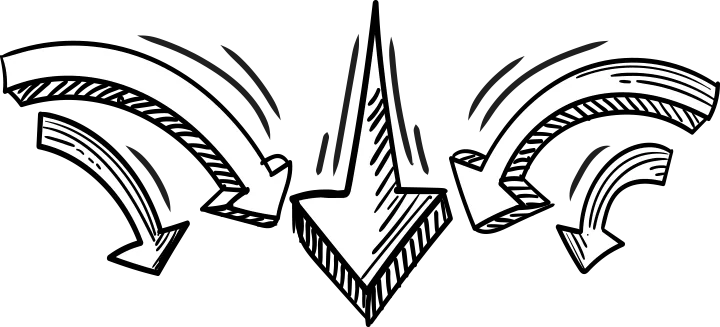I had the privilege of presenting at Mozcon Local yesterday. I’ve been looking forward to this event for a while as Moz events are always an absolute blast! It was awesome reconnecting with my LocalU amigos and other friends in the industry. I started off the day by moderating a panel discussion that focused on optimizing agency processes that yielded a ton of valuable tips for digital agencies. I was then part of a five-person competitive analysis team with Aaron Weiche from Get Five Stars, Paula Keller of Search Influence, Mike Ramsey from Nifty Marketing and Darren Shaw of Whitespark. We provided a deep-dive competitive analysis for The Buckler, a new apartment in Milwaukee. I’m a big fan of panel discussion like these when you get to present with a crew like this.

Analytics Workshop Questions & Comments
Later that afternoon I hosted three tracking and conversion workshops. There were quite a few questions, so I thought it would be a good idea to put together a list of questions from the sessions along with suggestions for specific measurement challenges. We also had some great tips from attendees that I’ll be sharing as well.
How do we measure awareness, behavior or other non-purchase related goals?

This is my probably my biggest analytics rant at the moment. Almost everyone measures leads, purchases, cart abandonment and other purchase related actions. Yes, these are important to track. But, there is a far from the complex story when you take time to examine the entire purchase funnel. Clients don’t just wake up and buy your stuff. They need to know you exist (awareness), understand why they need your product or service (demand & behavior), and then why yours is better than someone else’s (research & comparison) and then finally the purchase. There are many ways to track the top of the funnel. Here are a few of my favorites:
How to understand if visitors are reading your content – Here are three great ways to track scrolling on your website to see if people are actually reading your content from Himanshu Sharma of Optimize Smart as well as a great post about how to track scrolling from Justin Cutroni of Google. This helps understand the ideal length of specific topics, identify which pieces of content can successfully be long-form articles as well as finally get a grip on what your visitors are actually reading in general.
Measure how long people are actually watching your videos – Do you know how long people are watching your videos? Are they dropping off early? Where exactly do you lose them? Thanks to Google Tag Manager and Google Analytics this is relatively easy to track as well. Here’s a great post from Dan Wilkerson of LunaMetrics about tracking YouTube videos on your website with the combination of GTM and GA.
Use dashboards to easily monitor awareness and behavior – Setting up dashboards that target awareness and website behavior is a great way to easily monitor and learn how those portions of your marketing and advertising efforts are performing. Dashboards 2, 3, and 4 from the Whiteboard Friday video link below provide some ideas for top of the funnel dashboards. It also includes a five-step guide if you’re new to building Google Analytics dashboards.
What is a good tool for tracking phone calls in Google Analytics?
Call tracking is one of those hotly debated topics in local search. There’s always that fine line of how much data do I need to track vs. causing NAP (Name, Address, Phone Number) issues. We’ve had good success using Call Rail, but the call tracking favorite by a wide margin was Call Tracking Metrics. Nearly everyone that loved their call tracking solution in our workshops are using them. I look forward to checking them out when I get back to the office.
How do we track online to offline conversions?
This is a tough one. It’s always been difficult to track the success of online marketing and advertising campaigns that drive your online customer to literally get in their car, drive to your store and then make a purchase. I’ve created methods for tracking this in the past, but to be honest they were always added an extra step and I wanted to find a better way. Thankfully, I had a great conversation after the workshops were over with Dana DiTomaso from Kickpoint and Emily Grossman of Mobile Moxie. They recommended using a combination of people counters and Google Analytics. People counters (like SenSource) are a low-cost way to track people walking through the door of your retail shop, hotel, or other brick and mortar business. Their data can be directly imported into Google Analytics to provide action / reaction trending over time to see what influences people to visit your storefront. A caveat, though. This takes a bit of time and quite a bit of isolation. Do some experimentation to see what is really driving people to your place of business.
Please feel free to send in your questions or ask via Twitter. I’ll continue to add questions to this blog post as I hear from you.

It’s awesome seeing all of you
People have flown from all over the world for this event. I’m pictured above with Carmello Barbagallo from Local Success. He flew in from Germany with his girlfriend for the event. How awesome is that?! We had attendees from all over the United States and Canada as well as the 2nd appearance of our friend Kenechi from Japan. It’s so amazing to have to opportunity of getting to know the people here. I had a great conversation with cool fellow disc golfer in Noah Learner, got an amazing tip to read copy backwards to better discover copy issues from Kelsey Johnson, and had an awesome time at the happy hour event at the end of the day. It was amazing seeing all of you! Thanks again and please keep in touch.


